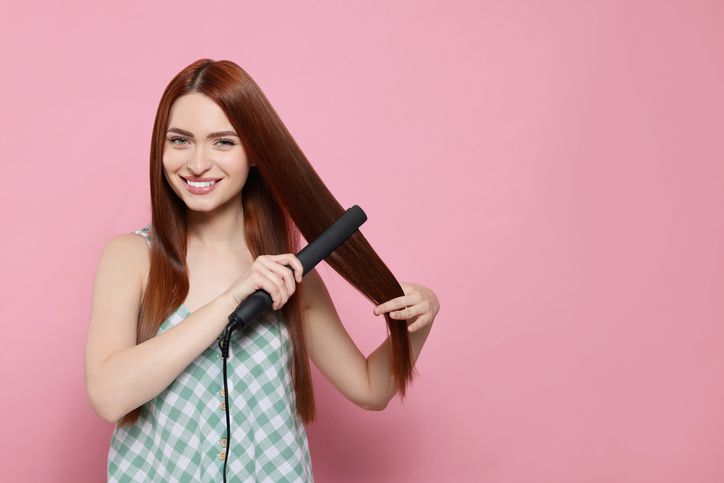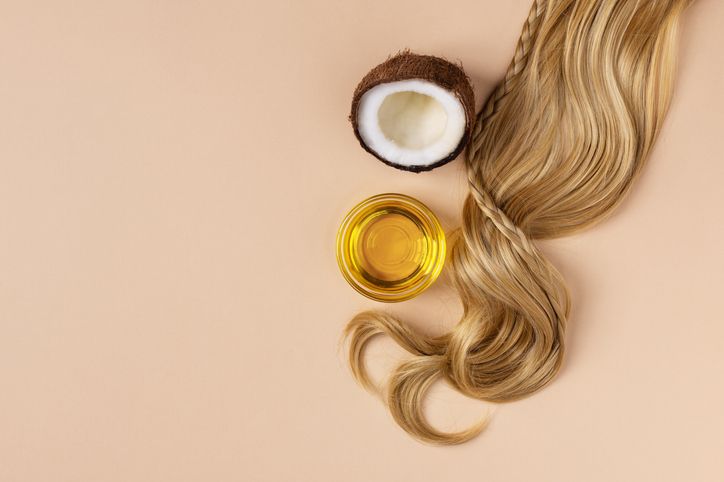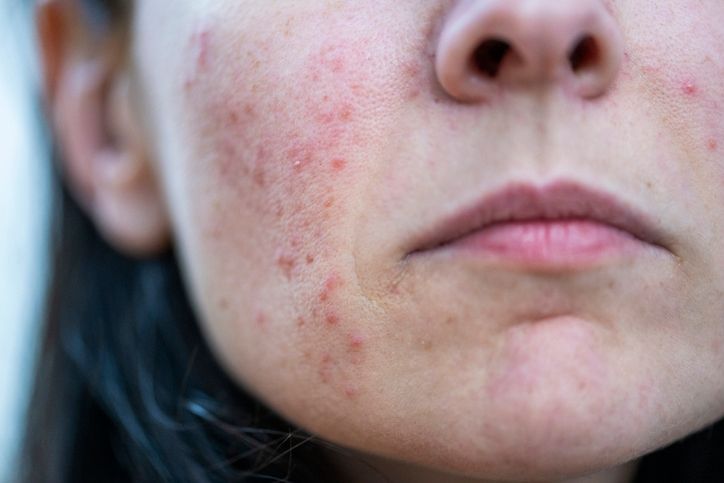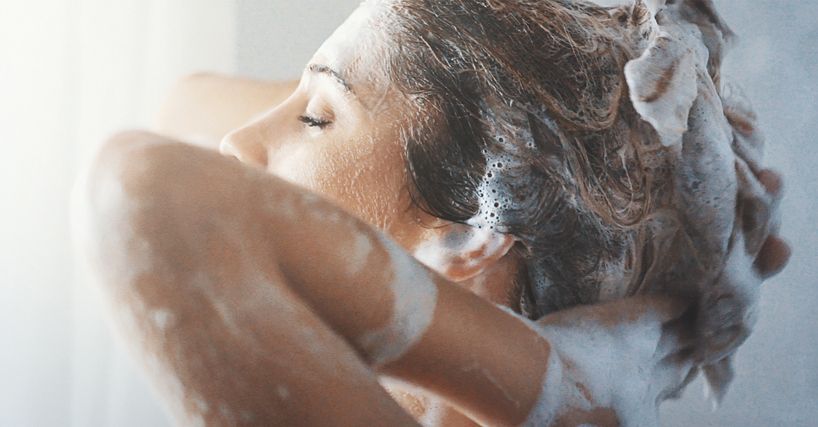
Author: Natalie Ng|Updated: 5 May 2025
If you constantly deal with tangled hair, you’re not alone. Whether it’s first thing in the morning or after washing, those annoying knots can show up without warning—and they’re more than just a styling issue. Tangled strands can be a sign that something’s off with your hair's health. It might be your hair type, or it could be your routine. Dry hair, damaged hair, or even using the wrong towel can make things worse. But tangled hair can also be your body’s way of pointing to something deeper, like nutritional gaps or health issues that are affecting your hair texture and strength. In this article, we’ll break down the real reasons behind why your hair tangles so easily. From how your natural oils work to the effects of heat styling, chemical treatments, and daily habits—these are the things that could be causing more harm than you think. Keep reading to learn what’s going on with your hair strands, and what you can do to prevent hair knots, reduce hair breakage, and keep your hair easier to manage.

Hormonal Imbalances and Their Impact on Hair Structure

Hormonal changes can affect your hair in ways you might not expect. If you're constantly dealing with tangled hair, it could be linked to a shift in your hormone levels—especially during times like pregnancy, menopause, or thyroid issues.
How Hormones Affect Hair Texture and Tangles
Hormones help regulate your scalp’s natural oils. When they're off balance, oil production drops. This can lead to dry hair, rough hair cuticles, and a higher chance of forming knots. Your hair shaft might feel coarse or brittle, which makes detangling hair more difficult and can lead to more breakage.
• Less oil = more friction: Without enough natural oils, your hair strands rub against each other and catch more easily, especially if you have fine hair or naturally dry hair.
• Rougher surface: Hormonal shifts can make your hair cuticles stay raised instead of lying flat. Raised cuticles make it harder for strands to slide past each other, which creates hair knots.
• Weakened structure: Some hormones affect how strong your hair grows. If the protein structure in your strands weakens, they become more fragile and prone to tangling, especially when your hair is wet or damp.
If your tangled strands come with other signs—like fatigue, sudden hair dryness, or hair breakage—it’s worth checking in with a doctor. While you work on balancing hormones, protect your hair by using a wide tooth comb, a satin or silk pillowcase, and a leave in conditioner to keep it soft and more manageable. Avoiding hot tools and harsh chemicals can also help reduce the chances of getting tangled tresses.

Nutritional Deficiencies Affecting Hair Health

If you’ve ever asked yourself, “Why does my hair tangle so easily?”, your diet might be part of the answer. What you eat affects how your hair grows, feels, and reacts to daily wear and tear. When your body doesn’t get enough of the right nutrients, your hair strands can lose their natural strength, flexibility, and moisture—making them more prone to knots and breakage.
Key Nutrients That Support Tangle-Free Hair
Your hair needs a balance of vitamins, minerals, and protein to stay strong and manageable. Without them, your strands can become weak, brittle, and more likely to tangle—especially when your hair is wet or dry.
• Iron Deficiency: Low iron levels reduce oxygen supply to hair follicles, which weakens your strands from the root. Weaker strands break more easily and are more likely to form knots, especially if you have fine hair or long hair.
• B Vitamin Deficiencies: B vitamins like B7 (biotin) and B12 help support healthy hair growth and structure. When these are low, your hair may become dull, dry, and prone to tangling, no matter your hair type.
• Lack of Protein: Hair is made mostly of protein (keratin). If your diet lacks enough of it, your hair shaft becomes fragile, making it easier for strands to catch and twist into knots.
• Zinc and Other Micronutrients: Zinc supports scalp health and oil balance. Without it, your scalp may produce less oil, which increases dryness and friction between strands.
Supporting Hair from the Inside Out
While a good hair care routine helps manage tangles short-term, it won’t fix the problem if your hair keeps getting weaker. To help your hair stay strong, shiny, and less prone to tangling:
• Eat a balanced diet with enough iron, protein, and vitamins.
• If you suspect a deficiency, get a blood test and work with a doctor or nutritionist.
• Use a hair mask weekly to boost moisture and strength while your body recovers.
• Avoid harsh hair care routines that stress your already fragile strands
By improving your nutrition and supporting your hair from within, you can reduce hair knots, prevent split ends, and help your hair remain tangle free over time.
Read More
Book Now to Experience
F8 Hair Regrowth Treatment
1 Minute Self-Registration
Date should not be before minimal date

Damage From Heat Styling and Chemical Treatments

Heat tools and chemical treatments are common in many routines—but they come with a cost. If you constantly deal with tangled hair, frequent styling could be weakening your hair strands and damaging the cuticle layer, making your hair much more prone to forming knots and breaking.
How Heat Styling Causes Tangling
Hot tools like curling irons, straighteners, and blow dryers apply intense heat directly to your hair shaft. Without using a heat protectant, this heat strips away the hair’s natural oils and dries out the outer layer.
• Dry hair is rougher: Without moisture and oil, your hair becomes stiff and loses flexibility. That friction between dry strands leads to tangling, especially with fine hair or long hair.
• Raised hair cuticles: Heat lifts the protective outer layer of your hair. Raised cuticles catch onto nearby strands, increasing your chances of developing tangled strands and split ends.
• Repeated use weakens structure: Over time, using hot tools daily without breaks leads to weaker strands that snap easily during brushing or towel drying.
How Chemical Treatments Damage Hair Structure
Chemical processes—like bleaching, relaxing, perming, and coloring—change the inner structure of your hair to create long-term effects. These changes can make hair look great temporarily, but they break down the proteins that keep your hair strong and smooth.
• Damaged hair absorbs moisture unevenly, which leads to frizz and knots.
• Harsh chemicals disrupt pH balance, making your cuticles more likely to stay lifted and rough.
• Hair becomes harder to detangle: Treated hair has less elasticity, so it can’t bounce back as easily. That means knots tighten faster and are harder to gently detangle.
How to Minimize Damage and Tangles
To reduce tangling caused by styling tools and treatments:
• Use a heat protectant every time you use hot tools.
• Let your hair air dry when possible instead of blow drying.
• Avoid overlapping chemical treatments (e.g., bleaching and coloring at the same time).
• Use a leave in conditioner after washing to help smooth cuticles and add slip for detangling hair.
• Take breaks from heat styling to give your hair time to rebuild strength.
By adjusting your routine, you can help prevent hair breakage and maintain more manageable hair—even if your hair type is naturally prone to tangling.

pH Imbalances and Hair Cuticle Issues

Your scalp and hair have a natural pH level, usually between 4.5 and 5.5. When this balance shifts, it affects how your hair cuticles behave. If the pH level goes too high or too low, the cuticles lift or become damaged—making your hair strands rough, dry, and more likely to tangle.
What Happens When pH Is Off
Your hair cuticle is like a protective outer layer. When it lies flat, your hair stays smooth and tangle free. But with an imbalanced pH, the cuticle opens up and creates a rough surface. This makes it easy for strands to catch on each other, especially with thick hair, coarse hair, or hair that’s already dry or damaged.
| pH Level | Effect on Hair | What to Do |
|---|---|---|
| Too Alkaline (>7) | Cuticle lifts, causing friction | Use acidic or pH-balanced products |
| Balanced (4.5–5.5) | Smooth, manageable hair | Maintain with gentle care products |
| Too Acidic (<4) | Hair becomes brittle and breaks | Avoid harsh treatments or acidic rinses |
Signs of a pH Problem
• You feel more hair knots forming after washing.
• Your hair feels dry, even with conditioner.
• You notice more split ends or tangled strands, especially when your hair is wet or damp.
How to Restore Balance
If your hair tangle problems are caused by pH imbalance, the fix starts with your products. Many shampoos—especially those with sulfates—are too alkaline and strip away your natural oils.
• Switch to a pH-balanced shampoo and conditioner to help close the cuticle.
• Use a hair mask or deep conditioning treatment once a week to add moisture and smooth rough areas.
• Avoid harsh chemicals that can throw off your hair’s natural pH.
• Gently detangle using a wide toothed comb while your hair is damp—not soaking wet or fully dry.
Book Now to Experience
F8 Hair Regrowth Treatment
1 Minute Self-Registration
Date should not be before minimal date

Medical Conditions That Lead to Hair Tangling

Sometimes, tangled hair is more than just a sign of poor hair care—it can point to underlying health conditions. If your hair was once smooth and manageable but now tangles easily without any major changes to your hair care routine, medical issues might be playing a role.
How Health Conditions Affect Hair Texture
Certain conditions change how your hair grows, how much oil your scalp produces, and how strong each strand is. These changes can make your hair shaft rougher, drier, and more likely to catch on itself—especially if you already have fine hair or long hair.
Thyroid Disorders
Your thyroid regulates important functions in your body, including how your hair grows. When your thyroid is overactive or underactive, it can cause:
• Dry hair and reduced oil production
• Changes in hair texture—hair may become coarse, brittle, or thin
• Increased tangling, especially with natural hair or straight hair that used to be low maintenance
Autoimmune Conditions
Some autoimmune disorders affect your scalp or hair follicles directly. Inflammation can disrupt the cuticle layer and change your hair texture, leading to more frequent hair knots and split ends.
• Hair becomes harder to detangle due to surface damage
• Natural oils may decrease, increasing dryness and friction
• You may notice clumps of tangled strands, especially after sleeping or towel drying
Nutritional Impact from Medical Conditions
Chronic health conditions may lead to nutritional deficiencies over time, especially if they affect digestion or appetite. Even if you're eating well, your body might not absorb the nutrients it needs for strong, healthy hair.
What You Can Do
• See a healthcare provider if your hair texture changes suddenly or if you're constantly dealing with a tangled mess despite following a good hair care routine
• Keep your hair trimmed regularly to prevent damaged ends from turning into stubborn knots
• Avoid tight hairstyles and hair extensions that put stress on already fragile strands
• Use a microfiber towel and sleep with a silk pillowcase or loose bun to minimize friction and overnight tangles

Dehydration and Hair Moisture Levels

Dehydrated hair is one of the most common reasons people constantly deal with tangles. When your hair doesn’t have enough moisture—either from within your body or from your hair care routine—your strands become dry, rough, and more likely to catch on each other. This increases your chances of forming knots, especially if you have long hair or hair that's naturally prone to tangling.
How Dry Hair Leads to Tangles
Moisture helps keep your hair flexible and smooth. When that moisture is missing, your cuticles lift and create friction between strands. This is even more noticeable with coarse hair, thick hair, or damaged hair.
• Dryness increases friction: With less moisture, your strands rub together and stick, especially during sleep or towel drying.
• Cuticle damage worsens tangles: Rough, lifted cuticles cause tangled strands to form more easily and tighten with movement.
• Dehydrated hair breaks easily: Trying to detangle dry, brittle hair without a detangling spray or leave in conditioner often causes split ends and breakage.
External Moisture Tips for Tangle Prevention
• Apply a leave-in conditioner or detangling spray after washing to seal in moisture and reduce friction.
• Avoid rubbing with towels—use a microfiber towel or gently squeeze out water with a cotton T-shirt.
• Use coconut oil or lightweight oils on damp hair to create a protective barrier and improve moisture retention.
• Let your hair air dry in a loose bun or braid to avoid overnight tangles.
The Role of Internal Hydration
Although drinking water doesn't directly hydrate your hair strands, staying hydrated helps your scalp function properly. It supports the production of natural oils, which coat the hair shaft and keep it smoother and easier to manage.
• Drink enough water daily to support your body’s overall function
• Eat water-rich foods and healthy fats that support hair moisture from within
• Combine hydration with a consistent, gentle hair care routine to prevent tangles from forming in the first place
Keeping your hair moisturized—both externally and internally—is key to reducing tangles and keeping your strands healthy, smooth, and manageable.

A Treatment That Supports Healthier, Less Tangled Hair: F8 Hair Regrowth Treatment
If you’re constantly dealing with tangled hair, the problem may go deeper than just your styling routine. Poor scalp health, weakened hair follicles, and low blood circulation to the scalp can all lead to hair dryness, rough texture, and fragile strands—making your hair more prone to knots. This is where the F8 Hair Regrowth Treatment comes in.
What Is F8 Hair Regrowth Treatment?
F8 is a non-invasive hair and scalp treatment that combines low-energy laser technology with a medical-grade hair growth serum. It targets the scalp directly to improve hair follicle strength, boost microcirculation, and create a healthy environment for new, stronger hair growth. Over time, this can lead to softer, smoother, and more manageable hair—less likely to form knots or turn into a tangled mess.
How F8 Helps Reduce Hair Tangles
The reason hair strands tangle easily often comes down to dryness, weak roots, and poor scalp condition. F8 addresses these by:
• Stimulating blood flow: The low-level laser energy enhances capillary circulation, allowing more nutrients to reach your hair roots. This helps the follicles grow stronger strands that are less prone to hair breakage and friction.
• Balancing oil and hydration: The hair growth serum helps control scalp sebum and restores moisture to the scalp, which can help smooth raised hair cuticles—a common reason for tangled strands.
• Cleansing the scalp: By unclogging pores and removing buildup, it supports a cleaner, healthier base for hair growth. A balanced scalp leads to natural oils being distributed properly, making hair more manageable.
Why Choose F8?
• Safe for both men and women experiencing hair or scalp concerns
• Non-surgical, with zero downtime
• Strengthens damaged hair and supports healthier hair texture
• Helps maintain moisture and oil balance, which is key to preventing tangles
• Works well with all hair types, including fine hair, coarse hair, and long hair
F8 doesn’t just target hair loss—it supports overall hair health, which plays a major role in minimizing hair knots, improving shine, and making your daily detangling routine easier.
Ready to Make Your Hair Easier to Manage?
If you're tired of constantly needing to detangle your hair or dealing with rough, knotted strands, F8 may help improve both the condition of your scalp and the quality of your hair growth. Book F8 today to start your journey toward tangle-free, healthier hair.
New Beauty's F8 Hair Regrowth TreatmentBook Now to Experience
F8 Hair Regrowth Treatment
1 Minute Self-Registration
Date should not be before minimal date
FAQ
Can Sleeping With Wet Hair Cause More Tangles in the Morning?
Yes, sleeping with wet hair substantially increases tangling because your hair is most vulnerable when wet. As you toss and turn during sleep, wet strands can easily twist and knot together, and the friction against your pillow creates more tangles. Additionally, wet hair is more elastic and prone to breakage, which can lead to split ends that contribute to tangling. It's best to dry your hair before going to bed.
Does the Type of Pillowcase Material Affect Hair Tangling?
You'll notice the difference when you wake up and run your fingers through your hair - your pillowcase material definitely affects tangling. Silk and satin pillowcases reduce friction and help prevent knots, while cotton pillowcases can grab and snag your hair throughout the night. If you're struggling with morning tangles, switching to a smooth, silk pillowcase can make a significant difference in maintaining smoother, less tangled hair.
How Often Should I Brush My Hair to Prevent Knots?
You should brush your hair 2-3 times daily: once in the morning, before bedtime, and optionally midday. Start from the bottom and work your way up to prevent breakage and distribute natural oils throughout your strands. If you have curly or textured hair, limit brushing to once daily when it's damp and use a wide-toothed comb or detangling brush to minimize damage and preserve your curl pattern.
Do Certain Hairstyles While Sleeping Reduce Tangling Throughout the Day?
Yes, protective hairstyles while sleeping can substantially reduce daytime tangling. 1) A loose, high bun secured with a silk scrunchie keeps your hair contained and minimizes friction. 2) A single loose braid or two side braids prevent strands from wrapping around each other. 3) You'll get the best results by pairing these styles with a silk or satin pillowcase, which reduces friction and helps maintain your hair's natural moisture balance.
Can Hard Water From My Shower Make My Hair Tangle More?
Yes, hard water can substantially increase hair tangling because it contains high levels of minerals like calcium and magnesium that build up on your strands. These minerals make your hair rough and prone to friction, leading to more knots and tangles. You'll often notice this problem through stiff, dull hair that's difficult to manage. Installing a shower filter or using a chelating shampoo can help combat these mineral deposits and reduce tangling.
Recommended Articles
COPYRIGHT© NEW BEAUTY MANAGEMENT LIMITED 2025. ALL RIGHT RESERVED.




